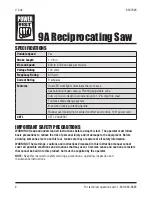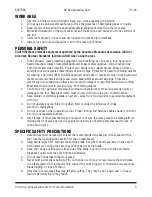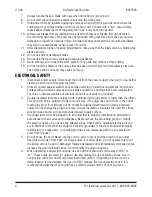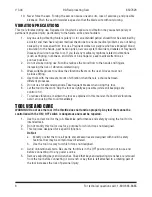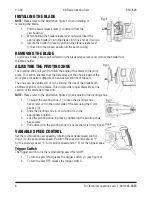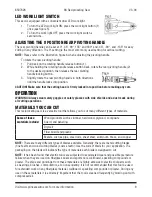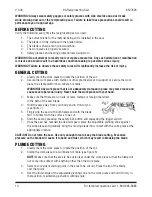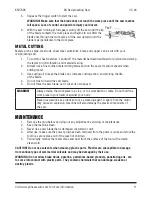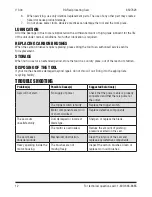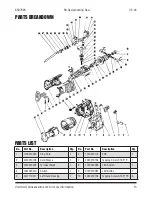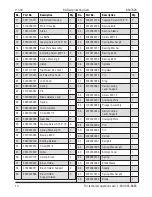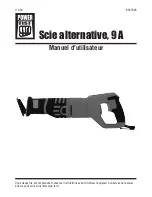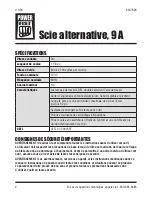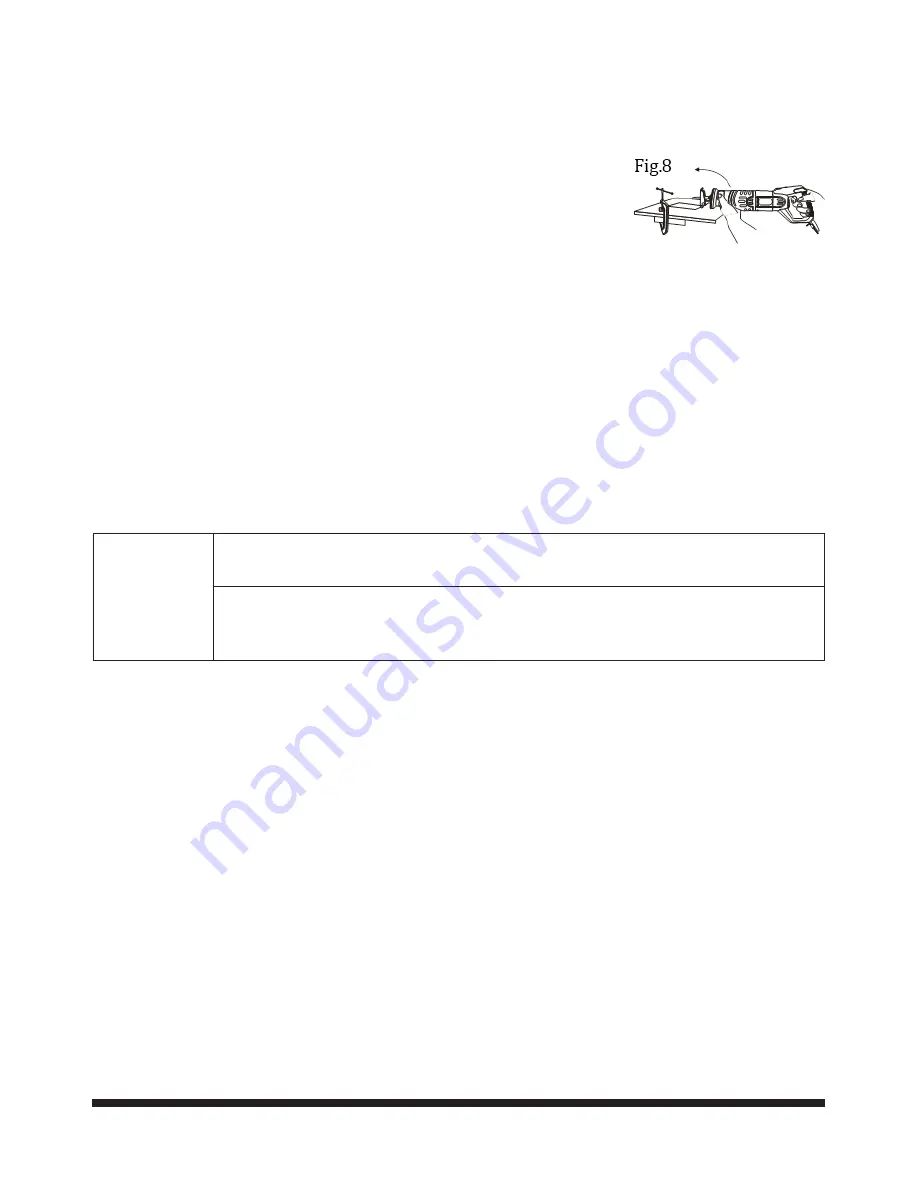
Visit www.princessauto.com for more information
11
8507626
V 3.04
9A Reciprocating Saw
5. Squeeze the trigger switch to start the saw.
WARNING! Make sure that the blade does not touch the work piece until the saw reaches
full speed. Loss of control and possible injury could occur.
6. With the saw running at full speed, slowly tilt the saw until the tip
of the blade contacts the work piece and begins to cut. After the
blade cuts through the work piece, tilt the saw upward until the
blade is perpendicular to the work piece.
METAL CUTTING
Metals such as pipe, steel rods, sheet steel, aluminum, brass and copper can be cut with your
reciprocating saw.
1. To cut thin sheet material, “sandwich” the material between hardboard or plywood and clamp
the layers to limit vibration and material tearing.
2. Always use a fine toothed metal cutting blade and run the saw at medium speeds when
cutting metal.
3. Use cutting oil to keep the blade cool, increase cutting action, and prolong the life
of the blade.
4. Do not twist or bend the saw blade.
5. Do not force the saw blade. Let it cut at its own speed.
WARNING!
Always clamp the work piece in a vice, or to a workbench or table. Do not hold the
work piece in your hand or against your body.
Never use gasoline as a lubricant or as a cleaning agent. A spark from the motor
may cause an explosion. Gasoline will also damage the plastic components of
the saw.
MAINTENANCE
1. Remove the plug before carrying out any adjustment, servicing or maintenance.
2. Keep the machine clean.
3. Never use a saw blade that is damaged, distorted or dull.
4. After use, make sure the power plug has been removed from the power source and store the
tool in a secure place out of the reach of children.
5. Periodically remove the metal chips and dust from the surface of the tool with a damp,
clean cloth.
CAUTION! Do not use solvents when cleaning plastic parts. Plastics are susceptible to damage
from various types of commercial solvents and may be damaged by their use.
WARNING! Do not allow brake fluids, gasoline, petroleum-based products, penetrating oils, etc.
to come into contact with plastic parts. They contain chemicals that can damage, weaken or
destroy plastic.


